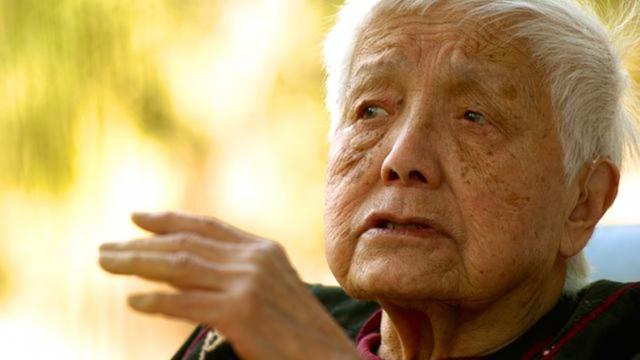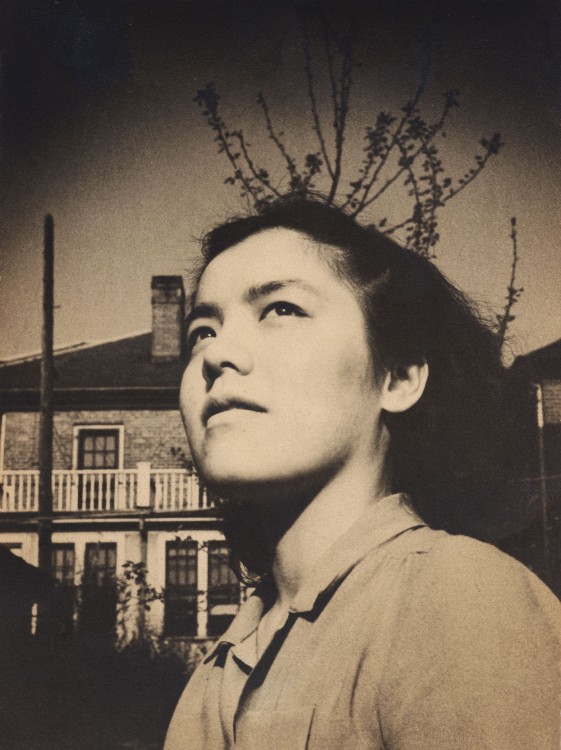
President Obama joined many this week in commemorating the life of Grace Lee Boggs, the organizer, philosopher and long-time Detroit resident who passed away yesterday at age 100. “As the child of Chinese immigrants and as a woman, Grace learned early on that the world needed changing, and she overcame barriers to do just that,” Obama eulogized. “Grace’s passion for helping others, and her work to rejuvenate communities that had fallen on hard times spanned her remarkable 100 years of life, and will continue to inspire generations to come.”
Such kind words from the Oval Office might have surprised a younger Boggs, who spent years writing — like most socialists of her day — under a pseudonym designed to protect against the virulent red-baiting that loomed over the post-war American left.
Today, Boggs is perhaps most popularly remembered for her work later in life, building up community institutions throughout Detroit: the Boggs Center to Nurture Community Leadership, the Detroit Summer program, a number of cooperative businesses and community gardens, even a charter school named in her honor. Less memorialized are Boggs and her late husband James’ deep involvement in the development of their city’s black freedom movement, and foundational role in articulating a new brand of class politics rooted in the experience of black workers.
During World War II, African Americans in the South migrated north to Detroit’s “Arsenal of Democracy,” where defense contracts offered steady, lucrative employment seemingly outside the grasp of Jim Crow. In all, 1.5 million African Americans left the South between 1940 and 1950, a time period during which Detroit’s black population more than doubled. Northern whites — eager to maintain racially homogenous neighborhoods and workforces — fought new arrivals, organizing bands of vigilantes to terrorize new black Detroiters. Tensions culminated in the city’s brutal riot of 1943, where 25 of the 34 people killed were African American, along with 75 percent of the 700 injured. As the war economy slowed, workers of color were relegated not only to divested areas of the city, but some of the most dangerous, poorly-paid work the Motor City had to offer.
In the 1970 documentary “Finally Got the News,” one worker recalled the treatment of a colleague who “lost his finger at the second knuckle.” After receiving $3,000, his supervisors “wanted him to come back to work two days later … producing with the bandages and all that.” Such violence and flagrant discrimination in jobs and housing catalyzed a vibrant culture of organizing in black Detroit — much of it, early on, stemming from churches and radical congregations, like that of the legendary preacher Albert Cleague.
Boggs followed an entirely different path to Detroit. While she boasted a PhD in philosophy from Bryn Mawr, the academic job market for young Chinese-American women in the 1940s was none too kind. Unable to find work as a professor, Grace Lee — not yet Boggs — took a job in a University of Chicago library, and quickly started organizing tenants to take on the city’s slumlords. Getting increasingly involved in Chicago’s socialist party politics, Lee followed theorist and “Black Jacobins” author C.L.R. James to New York, where she, James and Raya Dunayevskaya coalesced around a shared distrust for Soviet-style “state capitalism” and a commitment to the centrality of black workers’ struggle. She met James “Jimmy” Boggs in 1952 through working on the group’s left paper, Correspondence. He was an autoworker who’d moved from Alabama to Detroit to work in the factories and, as Grace Lee Boggs recalled of her husband in her 1998 autobiography, he “was a prototype of the kind of individual for whom the newsletter was being created.” Less than a year after their first encounter at a Correspondance-run school for rank-and-file workers in 1952, Boggs and Lee married and moved to Detroit.
Together, the Boggses and their intellectual collaborators within the Johnson-Forrest Tendency pioneered what they called the “proletarianization of philosophy,” an effort to make the high-theory innards of Marxist thought accessible to workers on the frontlines of Fordism’s lost promise. While they would split from James in the early 1960s, the couple continued to nurture the political development of some of the black freedom movement’s most influential leaders, including Revolutionary Action Movement founder Max Stanford, leaders in the lesser-known League of Revolutionary Black Workers, and even — to a lesser extent — native Michigander Malcolm X. They were part of a group of intellectuals who ran discussion groups for autoworkers on Marx’s Capital and other texts, and frequently opened their homes to young organizers eager to work through questions of power and strategy until the hours of the morning. “More often than not,” historian Peniel Joseph wrote, “the discussions turned into seminars in which the veteran activists demanded sharp analysis and concrete facts. Jimmy would ask questions that were difficult to answer: If the revolution was to succeed, how would the new society look? What would black people’s place in it be, and what kinds of jobs, government and society would exist?”
In “Faith in the City,” a history of 20th century black organizing in Detroit, Angela Dillard wrote that, “If cross-generational influence was indeed key to the development of political radicalism in 1960s Detroit, Grace Lee and James Boggs personified that influence.” Boggs was so deeply enmeshed in Detroit’s black organizing scene, in fact, that the FBI once mistakenly referred to her as “Afro-Chinese.” Through the end of her life, Boggs provided a rare model of an “engaged intellectual,” never losing sight of the relationship between the movements that surrounded her, the conditions they emerged from and the theoretical rigor that could drive them forward. What’s more, the writing that emerged from this ecology is an almost eerie preview of debates that would captivate progressives for the next half-century: the role of race, democracy and solidarity within industrial unionism, and how emergent movements for black liberation map onto fights for justice in the workplace.
Referencing President Franklin D. Roosevelt’’s famous “Four Freedoms” speech, Boggs wrote in 1942 that “Thirteen million Negroes in America have never known three of the ‘Four Freedoms’ which America is supposedly spreading to the rest of the world.” She called the freedom from want “a mockery … when their wages are the lowest and their rents and food prices the highest.” Commenting on an early (and ultimately successful) planned march on Washington to eliminate segregation in arms manufacturing, Boggs argued fervently against any approach that would focus singly on either race or class: “Whether the [March on Washington] movement proves transitory or develops into a broad and relatively permanent movement for Negro democratic and economic rights will depend upon whether it will develop a leadership which seeks its main support in the organized labor movement and whether the Negro masses in the labor movement are ready to enter into and actively support this general movement for Negro rights as a supplement to their economic and class activities within the unions themselves.”
As she aged, Boggs’s “dialectical humanism,” which had always placed a strong emphasis on the value of personal transformation, drifted further away from traditional class politics and toward a focus on the moral and cultural dimensions of social change work. As she told Bill Moyers in 2007, “We have not emphasized sufficiently the cultural revolution that we have to make among ourselves in order to force the government to do differently.” Nevertheless, she died — by all accounts — surrounded by a community she worked for over six decades to build. Her theoretical contributions and movement-building work continue to find voice in some of today’s most influential uprisings.
As Barbara Ransby recently argued in Dissent, a close attention to economic inequality lies at the heart of today’s movement for black life: “In speech after speech, the leading voices of this movement have insisted that if we liberate the black poor, or if the black poor liberate themselves, we will uplift everybody else who’s been kept down.” Ransby noted that some of the most visible leaders in the movement for black lives have spent years honing their skills and analysis in organized labor. “The larger left has to support, recognize and embrace Black Lives Matter, not as secondary, but as central and potentially catalytic for a broad and far-reaching transformative agenda.” Like Boggs, Ransby makes clear that there’s no contradiction in building movements for racial and economic justice: the two, in many ways, are already one in the same.
3 WAYS TO SHOW YOUR SUPPORT
- Log in to post comments












